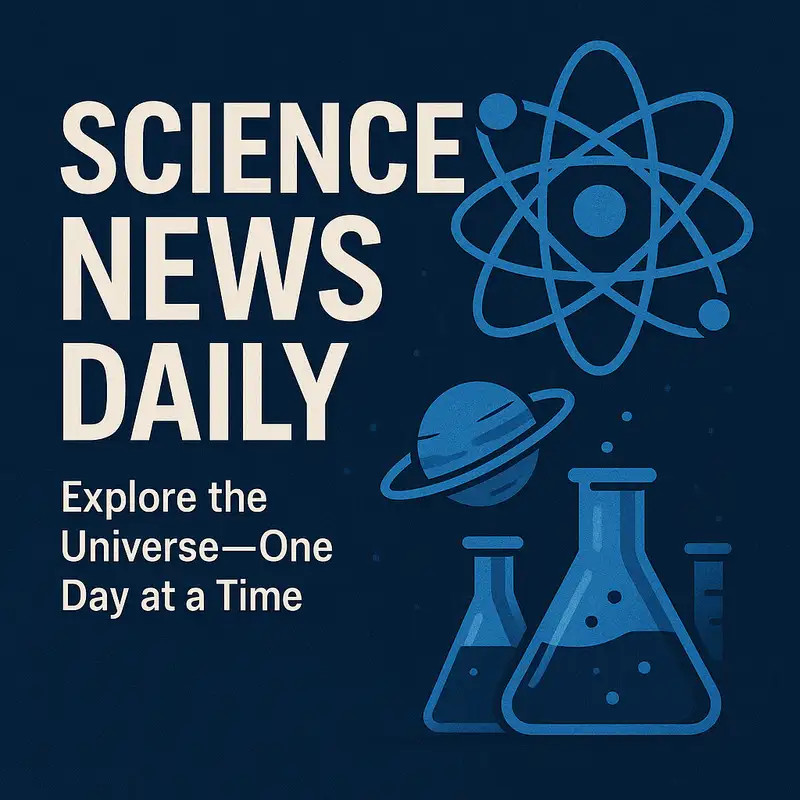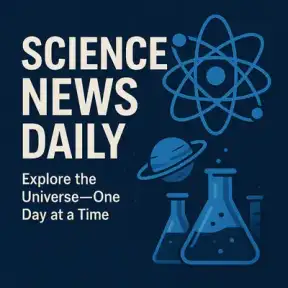🔬 Scientists Just Discovered Cancer Treatment That Attacks Without Destroying - Plus Dark Matter Signals May Have Been Found
Welcome to Science News Daily, your source for the latest breakthroughs and discoveries from the world of science. I'm your host, bringing you the most fascinating research making headlines this week.
Let's start with what could be a game-changing development in cancer treatment. Scientists from the Francis Crick Institute and Vividion Therapeutics have discovered a remarkable new compound that stops cancer growth without the devastating side effects we've come to associate with traditional cancer therapies. This breakthrough works by blocking the specific signals that tell cancer cells to grow and divide, effectively putting the brakes on tumor progression. What makes this particularly exciting is that in tests with mice suffering from lung and breast tumors, the treatment showed no harmful side effects. The therapy is now entering human trials, potentially opening the door to a new era of precision cancer medicine that targets only the bad cells while leaving healthy tissue untouched.
Moving from the microscopic to the cosmic, astronomers may be on the verge of solving one of the universe's greatest mysteries. Japanese scientists have proposed using radio telescopes on the Moon to detect faint signals from the universe's so-called Dark Ages, a period roughly 400,000 years after the Big Bang when the cosmos was shrouded in darkness. By listening for 21-centimeter radio waves from this ancient era, these lunar observatories could finally reveal the secrets of dark matter, that invisible substance that makes up about 85 percent of all matter in the universe but has never been directly observed.
Speaking of mysteries, researchers studying our own galaxy have uncovered something intriguing right in our cosmic backyard. Scientists at Johns Hopkins have detected a mysterious gamma ray glow at the heart of the Milky Way that could be the long-sought signature of dark matter particles colliding and annihilating each other. Using advanced simulations that account for how our galaxy formed billions of years ago, they found an almost perfect match between theoretical predictions and actual observations. However, the mystery isn't solved yet, as these signals could also come from rapidly spinning dead stars called millisecond pulsars.
In our solar system, Saturn's icy moon Enceladus continues to tantalize scientists with hints of potential life. Researchers reexamining data from NASA's Cassini spacecraft have discovered complex organic molecules being blasted into space from powerful jets near the moon's south pole. These findings suggest active chemical processes are occurring deep within Enceladus's hidden ocean, some of which may be forming the basic building blocks necessary for life as we know it.
Closer to home, we have some concerning news about what we're putting into our bodies. A massive study involving over 120,000 participants has revealed that both regular and diet soft drinks may be quietly damaging our liver health. Consuming more than one can per day of either sugar-sweetened or artificially sweetened beverages significantly increased the risk of metabolic-associated liver disease and even liver-related deaths. Surprisingly, diet drinks carried similar or even higher risks than their sugar-laden counterparts, possibly through their effects on gut bacteria and appetite regulation.
On a more positive health note, researchers have identified the most effective type of exercise for people suffering from knee osteoarthritis. A comprehensive study published in The BMJ found that aerobic exercises like walking, cycling, and swimming are the best ways to improve pain, mobility, and overall quality of life for those dealing with this common condition. The research emphasizes that regular aerobic activity not only helps manage symptoms but also enhances overall function.
In neuroscience news, Stanford scientists have achieved a remarkable breakthrough in brain research by solving a long-standing problem in growing brain organoids, or mini-brains, in the laboratory. Using a common food additive to prevent these tiny brain models from clumping together, they can now produce thousands of identical mini-brains simultaneously. This advancement could revolutionize how we study brain development and test new drugs for neurological disorders like autism and schizophrenia.
Finally, let's venture to Mars, where scientists have solved the mystery of strange gullies that once looked like they might have been carved by living creatures. It turns out that blocks of frozen carbon dioxide sliding down Martian sand dunes are the real sculptors behind these formations. Laboratory experiments showed how sublimating carbon dioxide ice can blast and burrow through sand, creating the deep trenches we observe on the Red Planet today.
That's all for today's Science News Daily. From cancer breakthroughs to cosmic mysteries, from brain organoids to Martian geology, science continues to expand our understanding of the world and universe around us. Keep looking up, keep asking questions, and we'll see you tomorrow with more fascinating discoveries from the frontiers of scientific research.

